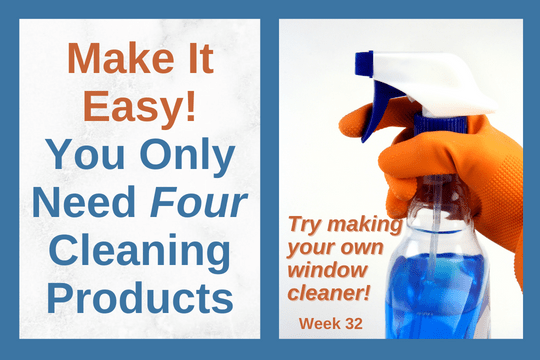What Cleaning Products Do You Need to Stockpile for an Emergency?
Cleaning products have always been a mystery to me with way too many options to choose from. It turns out that there are just four basic types of cleaning products that take care of most cleaning jobs: a pH-neutral cleaner, a degreaser, an alcohol-based glass cleaner, and a disinfectant.
To keep it simple, when possible, buy cleaning products in a concentrated form and then mix them with water as needed. You will also need spray bottles and a way to label them.
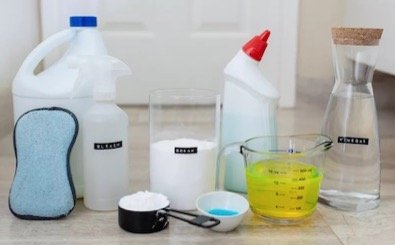
To be prepared for a crisis, it’s also a good idea to have the needed supplies so you can make your own cleaning products.
Preparedness Challenge Week 32
The challenge this week is to, first, inventory your cleaning products. Take note of the cleaners that are in low supply. Next, complete one of the two challenge options.
Option 1—Add a container of your favorite cleaning product to your storage supplies if you find that your inventory is low. Make sure you have the four types of cleaners mentioned.
Option 2—Add basic ingredients (described below) to your supply for making your own cleaning products.
Cleaner #1—pH-Neutral Cleaner
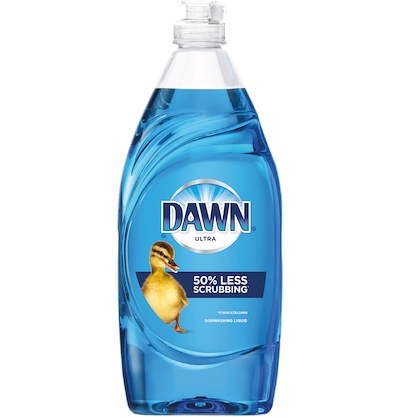
The simplest pH-neutral cleaner is dishwashing soap. Mix ¼ cup of dishwashing soap with a gallon of warm water. This cleaner can be used on floors and other hard surfaces in your home. All-purpose pH-neutral cleaning concentrates are another option.
Cleaner #2—Degreaser

Degreasers are alkaline-based cleaners often used in the kitchen to remove grease and fat build-up around the stove or to clean grills and garages. One product I like is Soilmaster, a product for degreasing from Don Aslett’s Cleaning Center.
Cleaner #3—My Favorite Glass and Window Cleaning Product
A few years ago, I read an article evaluating cleaning products in Consumer Reports. Their top window cleaner recommendation was a homemade glass and window cleaner that I have loved using ever since. It is super inexpensive as well as simple to-use and effective—it only takes three ingredients plus water and spray bottles. It is not only great for cleaning windows and mirrors, but I grab it to clean appliances, counter tops, door jams, and even for spots on carpets.
GLASS AND WINDOW CLEANER
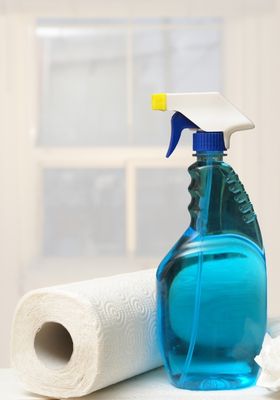
Combine the following:
- ½ cup ammonia
- ½ teaspoon liquid dishwashing soap (I use Dawn)
- 1 pint isopropyl (rubbing) alcohol
Add enough water (I like distilled water) to make 1 gallon. Pour into spray bottles and label. You can add a couple of drops of blue food coloring if you want to distinguish it from other cleaners.
Cleaner #4—Disinfectant Cleaner

Disinfecting isn’t necessary most of the time, and overdoing it can actually increase the likelihood of infection from “superbugs” that become resistant to disinfectants. However, when you have cleaned hard surfaces of dirt and debris, you may want to finish by using a disinfectant, especially if you are trying to keep illness from spreading.
Disinfecting wipes are a good answer to most disinfectant needs. Use these handy wipes on frequently-touched surfaces like doorknobs, faucets, counter tops, and toys as well as other obvious places like bathrooms and inside trash cans.
White vinegar, hydrogen peroxide, rubbing alcohol, and bleach are common disinfectants.
Make Your Own Disinfectant Wipes

Use Viva towels or other sturdy paper towels that hold up when wet. Cut the roll of paper towels in half with a sharp knife so that it will fit more easily in a container. You will need a container to hold the moist wipes. Either use a previously-used wipes container or improvise with other plastic containers or resealable bags.
Choose one of the formulas for the disinfectant. Stuff towels in container and slowly pour enough liquid over the towels so they will be moist but not drippy. Remove the center cardboard roll. Store in an airtight container in a cool, dark location to prevent evaporation.
An alternative is to put the disinfectant of your choice in a spray bottle and simply spray a paper towel as needed.
FORMULA 1—ISOPROPYL (RUBBING) ALCOHOL DISINFECTING WIPES
Make a solution using 2 cups filtered or distilled water, 1 cup isopropyl alcohol, and 1/2 teaspoon of dishwashing soap. Optionally, add 3 drops of tea tree oil or lavender oil. Pour alcohol solution over paper towels until towels are moist. To disinfect, wet the surface completely. When the surface is dry, it is now disinfected.
FORMULA 2 –BLEACH-BASED DISINFECTING WIPES
Bleach-based solutions have a very short shelf-life of one to two days. It is better to make wipes in small batches. Surprisingly, undiluted bleach is not very effective. For a general disinfecting solution, use a one-part bleach to twenty-parts water (2 tablespoons to 2 ½ cups of water). For a stronger solution use one-part bleach to nine-parts water.
For disinfecting wipes, make a weak solution using one teaspoon per cup of water (four teaspoons of bleach to one quart or five tablespoons to one gallon). Wet the towels until damp/wet but not dripping. Use to disinfect frequently-touched hard surfaces. Use with gloves and with good ventilation. Take care because bleach is caustic and can corrode metal and damage clothing.
FORMULA 3—GENERAL CLEANING WIPES
Make a solution using 1 cup of water, ½ cup vinegar, and ½ teaspoon dishwashing soap. This is a good solution for general cleaning. For cleaning glass and shining appliances, make a solution using 2 cups distilled water, ½ cup white vinegar, and ½ cup rubbing alcohol.
Tips for Stockpiling Generic Cleaning Products
You may want to store multipurpose generic cleaning products as a back-up so you can make your own cleaning products. Most of them have a long shelf life and store well.
ALCOHOL, ISOPROPYL (RUBBING)
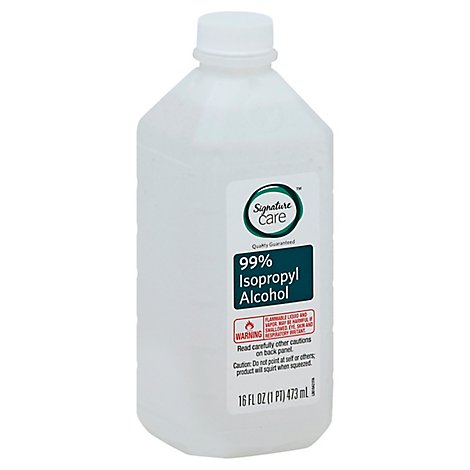
Alcohol is a disinfectant and often mixed with other cleaning chemicals to help with evaporation. It has an indefinite shelf life, but the lid needs to be tight to prevent evaporation.
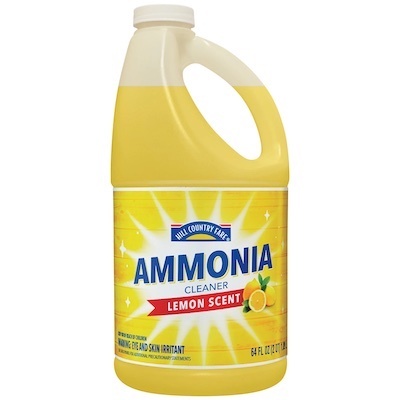
AMMONIA, HOUSEHOLD
Ammonia hydroxide, also known as household ammonia, is an all-purpose cleaner found in many commercial cleaners. To make an all-purpose cleaner, combine ammonia with water in a one-part ammonia to eight-parts water ratio, plus a few drops of dish detergent. It is effective for biological stains such as animal fat, vegetable oil, and wine. Ammonia is caustic, so use rubber gloves and eye protection and ventilate well. Ammonia has a shelf-life of about three years.
Be aware that ammonia produces deadly fumes if combined with any chlorine product such as bleach.
BAKING SODA
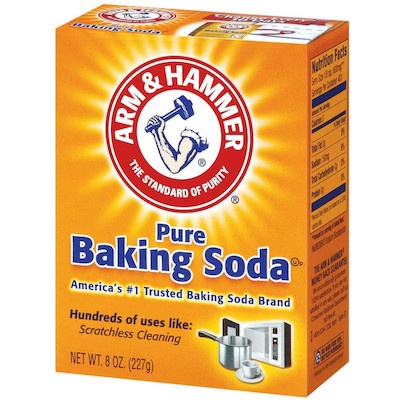
Baking soda has a moderately basic pH and has an abrasive quality helpful for scouring. It is effective when combined with warm water, acids such as vinegar or lemon juice, and hydrogen peroxide. It will help clean tile grout, freshen sinks, unclog bathroom drains, brighten laundry, etc. Baking soda has an indefinite shelf life if stored properly, but can lose potency over time. Test by adding a teaspoon of vinegar to a half teaspoon of baking soda. If it fizzes decently, it is still good.
BORAX
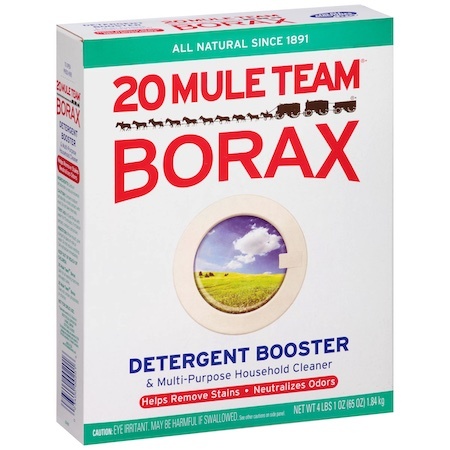
Borax is a used as a laundry whitener and as a general cleaner. When combined with water it forms hydrogen peroxide. It also acts as a water softener and can help decalcify hard water build-up. It can be used to clean stains from carpets and to help neutralize the odors from mold and mildew. Like most powders, Borax has an indefinite shelf life if kept in a cool, dark, dry environment.
HYDROGEN PEROXIDE
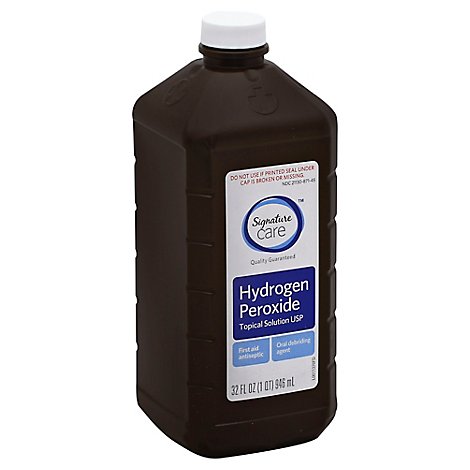
Hydrogen peroxide can help disinfect surfaces like bathtubs, counters, cutting boards, doorknobs, sinks, toilet, and toys. It can be used to clean suspect fruits and vegetables. Hydrogen peroxide has a shelf life of about three years when unopened. Once it is opened, it begins to deteriorate and has a shelf life of about six months.
VINEGAR
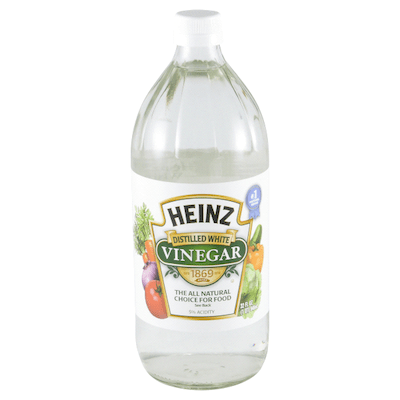
Vinegar has a long history as a household cleaner. It is especially good for cleaning hard water spots off of ice makers and around faucets. But use it with caution because the acid in it can cause damage to porous surfaces like stone, wood surfaces, grout, some metals, and rubber gaskets and hoses. The vinegar smell may be strong, but it quickly dissipates. Vinegar has an indefinite shelf life.
Learn More
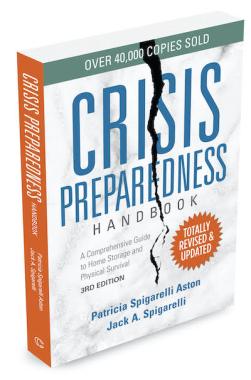
Learn more about preparedness skills in all areas of preparedness. Learn to evaluate your risk and make a custom plan for your total preparedness. You will get checklists, quick-start ideas, worksheets, and personal tips to make preparing easy. Find it on my website CrisisPreparedness.com. Or, read it on Amazon in the hard copy version or the Kindle version.
#emergencypreparedness #preparedness #selfreliance #beprepared #cleaningproducts #crisispreparednesshandbook
